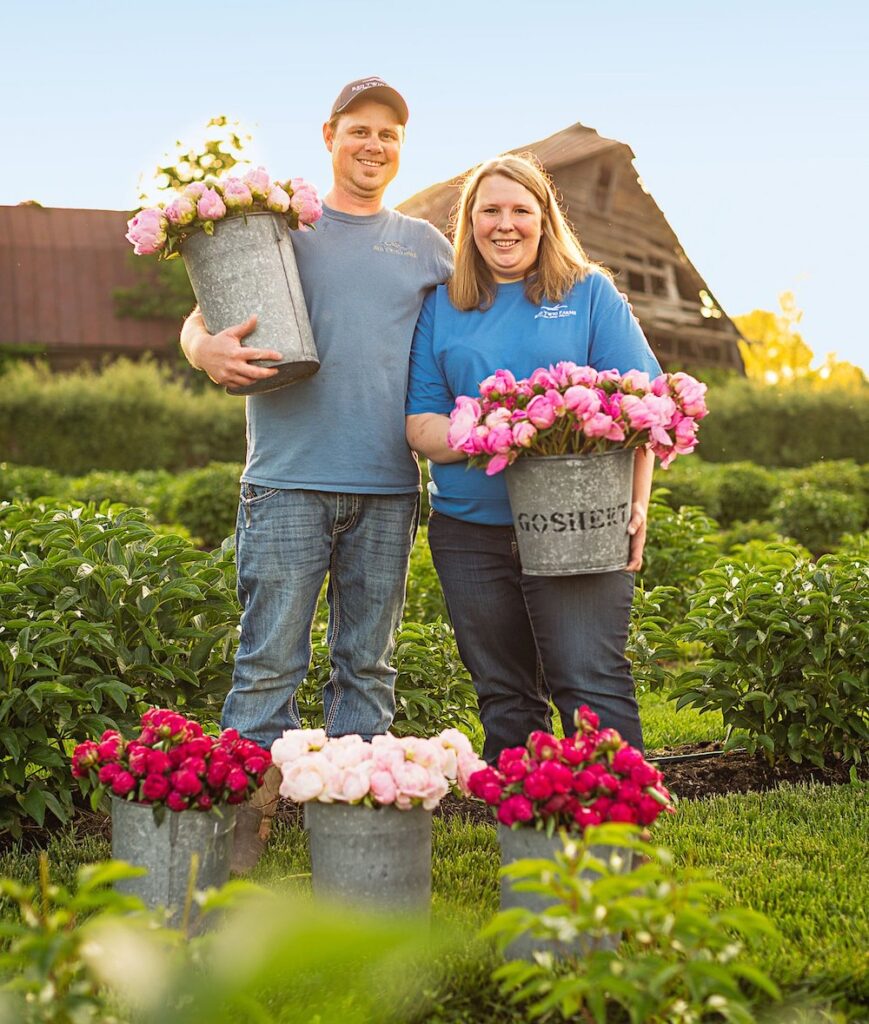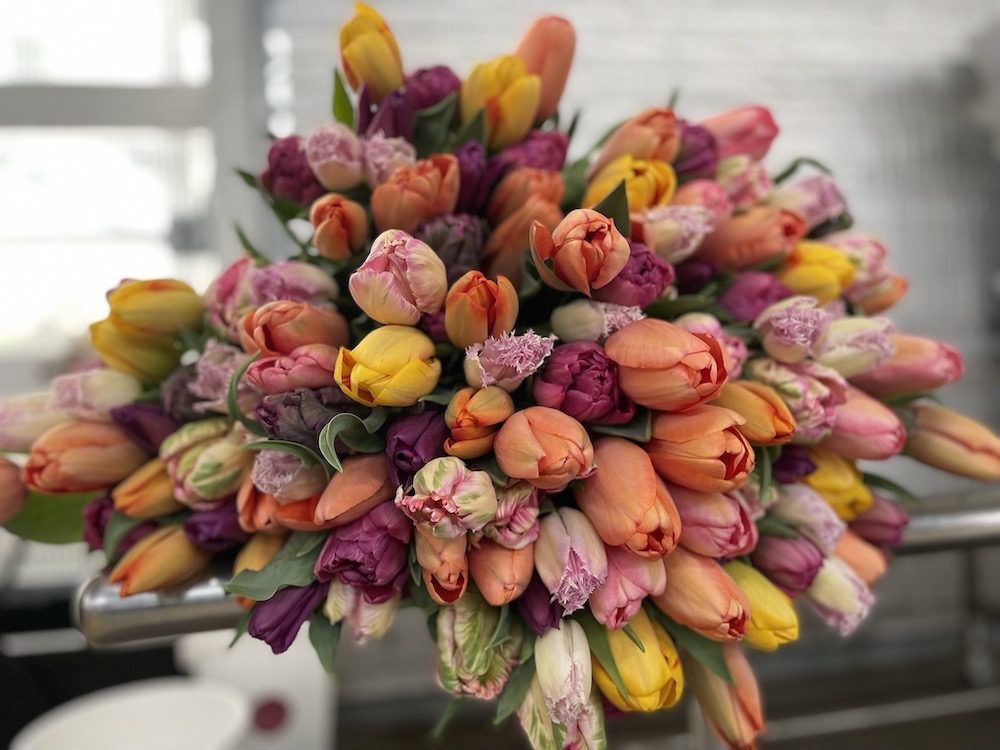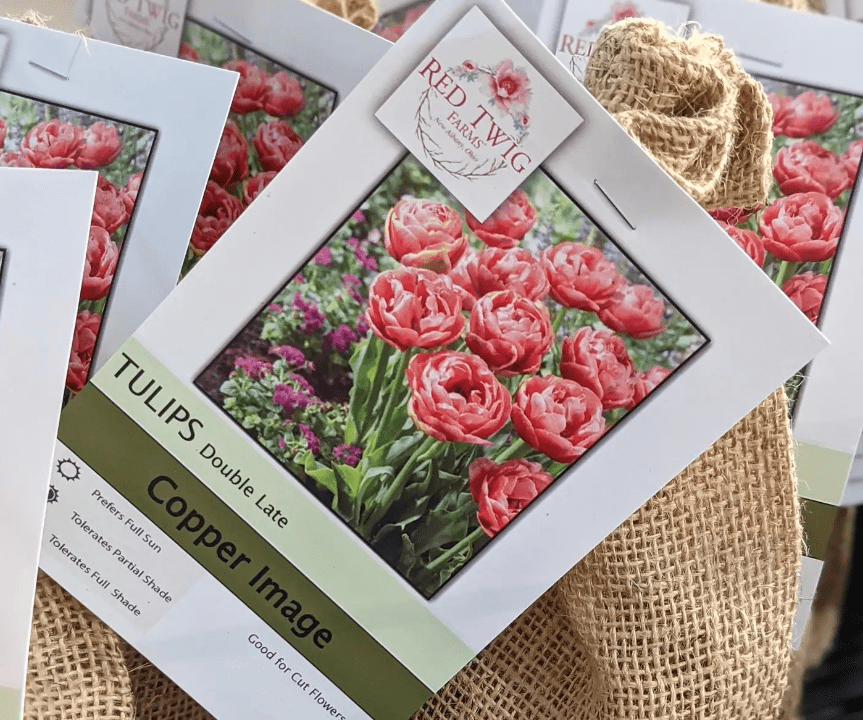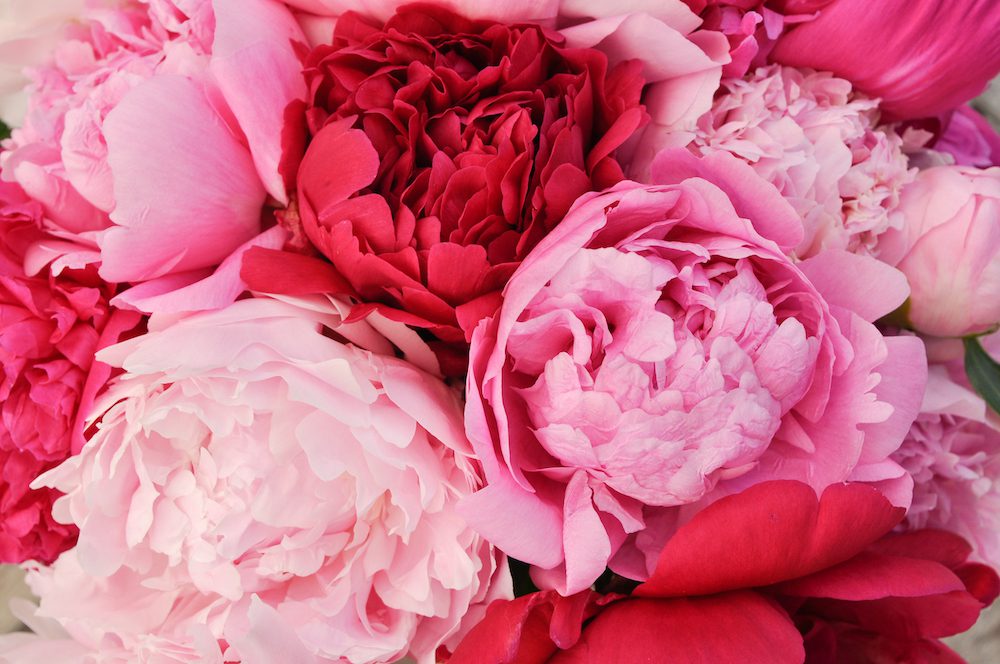Red Twig Farm Focuses on Quality vs. Quantity

Red Twig Farm is a six-acre specialty cut flower and woody farm in New Albany/Johnstown Ohio. Known for its peonies, tulips, ilex, dogwood and willow branches for gardens, owners Josh and Lindsey McCullough also run an uber-popular peony festival where more than 7000 people visit. Furthermore, they offer a self-serve flower stand with availability each week without having to pre-order as many local farms are doing. In the winter, they are also a go-to place for wreaths and greenery. They have also expanded their operation to sell not only gorge cut flowers but planting material for the public to plant American-grown flowers at home.
What is their superpower?
“They are very entrepreneurial and look for opportunities to get flowers into customers’ hands in unconventional ways,” says Slow Flower movement founder Debra Prinzing. “For example, during Covid, they had a glut of tulips and created a buy a bouquet for a stranger program. This not only helped them sell all the tulips but benefited the community and kept their employees employed.”
And as Lindsey and Josh McCullough say, this act of kindness also changed their business model.
“We had no idea how to keep the farm going and harvesting if we couldn’t have people on the farm,” says Lindsey McCullough. “At lunch one day I came up with the idea of what if we donated the bouquets to first responders, health care, etc? So our stranger to stranger donate 10 tulip stems campaign was started. Almost our entire tulip crop was purchased by customers and followers for our team to deliver to those in the area to spread hope, joy, and love. We figured out how to ship and for peony season over 1711 boxes of peonies went to consumers’ doorsteps in four weeks. Our entire business model pivoted.”
“With Josh’s family background as an expert farmer, they are also writing new rules for being flower farmers with their flowers,” adds Prinzing, noting their flourishing selling of not only cut flowers but plants and bulbs. “We didn’t expect our nursery side to grow like it is but it’s great to provide quality bulbs, bareroots, and plants to our customers and other flower farmers,” says McCullough. “We test run everything with existing customers the year before we offer it to the public.”

Challenges and Solutions
“As the years continue, our area seems to get more and more rainfall and flooding,” says Lindsey McCullough. “We have been renovating the fields to work with more of the crops that love water. We are expanding in dogwood, willow, and ilex branches. We have moved to plant our dahlias, tulips, and peonies into tunnels which allows us to control them better.”

Philosophy
“We try to stay more of a niche farm focusing on our quality over volume,” says Lindsey McCullough. “We have dabbled in many flowers but decided it was best to focus on those that love the farm’s soil and weather.”
And yes, they have brought back their stranger to stranger tulip campaign by “popular demand” and sold crops that translated to helping the community. “Our team spread them to the communities themselves,” she says proudly. Furthermore, they have learned how to deal with weather constraints and just completed another successful peony season during the hottest time of the year and are shipping their quality flowers and gardening and landscaping products nationwide.
Proving that if you plant seeds you never how opportunities grow, McCullough says that if you would have told the couple three years ago that they would also be a nursery, and also ship cut flowers and plants nationwide, they would have laughed. But sometimes reality exceeds dreams. In fact, the Department of Agriculture just visited the blossoming farm and gave these American farmers their seal of approval too. What’s next? Keeping their standard of excellence while overseeing 4800 plants on their American flower farm homestead.

Jill Brooke is a former CNN correspondent, New York Post columnist and editor-in-chief of Avenue and Travel Savvy magazine. She is an author and the editorial director of FPD, floral editor for Aspire Design and Home magazine and contributor to Florists Review magazine.
